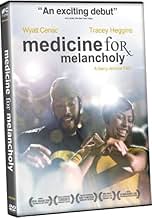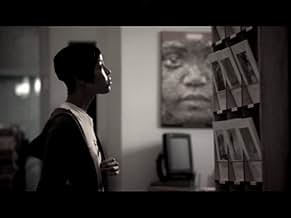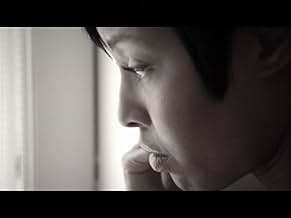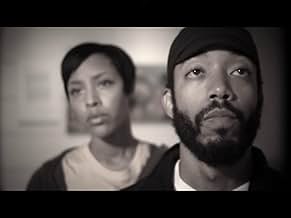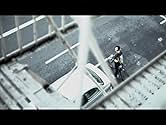CALIFICACIÓN DE IMDb
6.6/10
2.8 k
TU CALIFICACIÓN
Veinticuatro horas en la relación tentativa de dos jóvenes sanfranciscanos que también se enfrentan al dilema de ser una minoría en una ciudad que se aburguesa rápidamente.Veinticuatro horas en la relación tentativa de dos jóvenes sanfranciscanos que también se enfrentan al dilema de ser una minoría en una ciudad que se aburguesa rápidamente.Veinticuatro horas en la relación tentativa de dos jóvenes sanfranciscanos que también se enfrentan al dilema de ser una minoría en una ciudad que se aburguesa rápidamente.
- Dirección
- Guionista
- Elenco
- Premios
- 2 premios ganados y 10 nominaciones en total
Melissa Bisagni
- Sierra Orneilias
- (as Melisa Bisagni)
Chida Emeka
- Hydration Hustler 1
- (as Chidi Emeka)
Ondine Kilker
- Ondine Kilcher - Housing Rights Meeting Attendee
- (as Ondine Kilcher)
- Dirección
- Guionista
- Todo el elenco y el equipo
- Producción, taquilla y más en IMDbPro
Opiniones destacadas
Micah (Wyatt Cenac) takes Joanne (Tracey Heggins) to the Museum of the African Diaspora on a Sunday afternoon. They woke up that morning in somebody else's house not knowing each other's names after a one-night stand at a party where they both got very drunk. It's San Francisco. They're black. They ride bikes. She was very unfriendly at first, not just because it was a drunken coupling but because she has a white curator boyfriend she lives with who just happens to be in London for the moment, but she loves him.
The first part of this first film by Barry Jenkins, which is shot in digital video tuned to be almost but not quite totally drained of color (like the city, as we are to learn), with pale grays and very white whites, is sustained by Micah's efforts to make Joanne want to spend some time with him. He thinks they ought to get to know each other, and it's a Sunday. She's not at all interested at first. They're both hung over, after all. She lets him take her home in a taxi and then just gets out and runs. But she leaves her wallet on the floor. To go back and find her it takes a search, on his bike, across town, because the address on her license isn't current. The film is also sustained by being very specifically shot in San Francisco. When Joanne goes to a gallery to run an errand it's a very specific gallery. The Museum of the African Diaspora is the Museum of the African Diaspora. The light is San Francisco light. Micah and Joanne are young urban sophisticates. That, as Micah points out, is not only specific but makes them a small minority of a small minority, because gentrification has shrunk the city's blacks to 7% of the city population (New York's proportion is 28%).
Later buying groceries for dinner at his place (because Micah succeeds and Joanne does spend the day with him, and more) they happen upon a group discussing what appears to be the imminent banishment of rent control in San Francisco. Is Jenkins lecturing us, or just treading water? It doesn't matter so much, because the interactions of Micah and Joanne and the wry, cautious words they use when they talk to each other remain central, and are as specific and accurate to who they are (if not to San Francisco) as the cityscapes and the special light.
These two fine actors and this sensitive filmmaker certainly know how to make it real and to record how unpredictably things change from minute to minute. When Micah takes Joanne to the museum, instead of SFMoMA (her original suggestion), and then to the Martin Luther King Memorial at Yerba Buena Center, maybe it's turning into a pretty cool date. But when he leads her over a little bridge there and says, "This is like LA," she just rather coldly says, "Never been," and then, rubbing it in once more and pulling back, "This is a one-night stand." A ride on the merry-go-round at Yerba Buena, she seems to be saying, isn't going to change anything. This delicate homage to a moment is also a rueful acknowledgment of how hard it is to change the way things are.
And it has to be a bit of a lecture, because Micah is "born and raised," while Joanne is a "transplant," and he wants to remind her how the Fillmore and the Lower Haight were wiped out in the Sixties in "Urban Redevelopment:" goodbye black people, goodbye white artists. Micah lives in an immaculate little apartment in the Tenderloin. Micah, as the voice of Barry Jenkins, wants to reclaim San Francisco for everyday people.
Actually, Micah and Joanne seem like a perfect couple. Maybe that's why they can't be together, except just for this one day? You want to just shout out to them, "Can't you just be friends?" They fit so well together. Is this 'Medicine for Melancholy' or just 'melancholy'? Maybe it's medicine 'and' melancholy. That must be it. A fine little lyric of people and a place. And wholly without cliché except maybe for the tagline: "A night they barely remember becomes a day they'll never forget. "
Seen at the San Francisco International Film Festival 2008. This had its debut at SXSW, the South by Southwest Interactive event in Austin, Texas. 'Medicine for Melancholy' tied for the Audience Award for Best Narrative Feature in San Francisco with Rodrigo Pla's 'La Zona.'
The first part of this first film by Barry Jenkins, which is shot in digital video tuned to be almost but not quite totally drained of color (like the city, as we are to learn), with pale grays and very white whites, is sustained by Micah's efforts to make Joanne want to spend some time with him. He thinks they ought to get to know each other, and it's a Sunday. She's not at all interested at first. They're both hung over, after all. She lets him take her home in a taxi and then just gets out and runs. But she leaves her wallet on the floor. To go back and find her it takes a search, on his bike, across town, because the address on her license isn't current. The film is also sustained by being very specifically shot in San Francisco. When Joanne goes to a gallery to run an errand it's a very specific gallery. The Museum of the African Diaspora is the Museum of the African Diaspora. The light is San Francisco light. Micah and Joanne are young urban sophisticates. That, as Micah points out, is not only specific but makes them a small minority of a small minority, because gentrification has shrunk the city's blacks to 7% of the city population (New York's proportion is 28%).
Later buying groceries for dinner at his place (because Micah succeeds and Joanne does spend the day with him, and more) they happen upon a group discussing what appears to be the imminent banishment of rent control in San Francisco. Is Jenkins lecturing us, or just treading water? It doesn't matter so much, because the interactions of Micah and Joanne and the wry, cautious words they use when they talk to each other remain central, and are as specific and accurate to who they are (if not to San Francisco) as the cityscapes and the special light.
These two fine actors and this sensitive filmmaker certainly know how to make it real and to record how unpredictably things change from minute to minute. When Micah takes Joanne to the museum, instead of SFMoMA (her original suggestion), and then to the Martin Luther King Memorial at Yerba Buena Center, maybe it's turning into a pretty cool date. But when he leads her over a little bridge there and says, "This is like LA," she just rather coldly says, "Never been," and then, rubbing it in once more and pulling back, "This is a one-night stand." A ride on the merry-go-round at Yerba Buena, she seems to be saying, isn't going to change anything. This delicate homage to a moment is also a rueful acknowledgment of how hard it is to change the way things are.
And it has to be a bit of a lecture, because Micah is "born and raised," while Joanne is a "transplant," and he wants to remind her how the Fillmore and the Lower Haight were wiped out in the Sixties in "Urban Redevelopment:" goodbye black people, goodbye white artists. Micah lives in an immaculate little apartment in the Tenderloin. Micah, as the voice of Barry Jenkins, wants to reclaim San Francisco for everyday people.
Actually, Micah and Joanne seem like a perfect couple. Maybe that's why they can't be together, except just for this one day? You want to just shout out to them, "Can't you just be friends?" They fit so well together. Is this 'Medicine for Melancholy' or just 'melancholy'? Maybe it's medicine 'and' melancholy. That must be it. A fine little lyric of people and a place. And wholly without cliché except maybe for the tagline: "A night they barely remember becomes a day they'll never forget. "
Seen at the San Francisco International Film Festival 2008. This had its debut at SXSW, the South by Southwest Interactive event in Austin, Texas. 'Medicine for Melancholy' tied for the Audience Award for Best Narrative Feature in San Francisco with Rodrigo Pla's 'La Zona.'
The premise of a man and woman rushing through all the phases of falling in love in one twenty-four hour period with the backdrop of a great city is a popular one. Nonetheless, it is a formula I never tire of, especially given the three main characters of "Medicine for Melancholy": Micah, Jo and the city of San Francisco. An awkward introduction in the light of day after a drunken one-night stand leads to an inauspicious "date" spent biking and cabbing around San Francisco. Unlike the relentless (but entertaining) dialogue of the Ethan Hawke and Julie Delpy characters in "Before Sunrise," or the charming tension between the mis-matched and ill-fated Audrey Hepburn and Gregory Peck in "Roman Holiday," the couple in "MFM" spend long moments of non-verbal connecting that is tinged by an overt sadness. This melancholy is confirmed by the sad dog eyes of Micah, the initially cold reaction of Jo and the lovely washed out hues of James Laxton's cinematography as he records the events of the single day shared by the couple. This movie is not driven by a narrative per se but by a series of moments that show a real emotional ballast many cinematic long-term relationships could not convey. Yet, the inevitability of the day's end and thus of the relationship's (mirrored by the fate of the city itself as it succumbs to a gentrified, character-less version of its fabled self), create a longing I felt hours after the movie ended. The soundtrack certainly contributed.
You couldn't make a movie that looks more like my day to day life in San Francisco than this. Telling the story of two black twenty-somethings who meet and have a one night stand, they start off the morning after in Bernal Heights, walk over to Noe Valley for breakfast, hop a cab to the Marina to drop her off, then he heads back to his studio on Geary at Hyde, two blocks from where I once rented a nearly identical apartment, down to the rotating walk-in closet door that once sported a Murphy bed. The couple meet again and head to the Museum of the African Diaspora on Mission and then over to Yerba Buena Gardens to ride the merry-go-round, both a block away from where I work. Later that night they buy stuff for dinner at Rainbow Grocery then head down to the Knockout to dance while my pal DJ Paul Paul spins 45s although his oldies singles are overdubbed on the film's soundtrack with obscure but cool indie rock. But aside from the pleasure of seeing all my usual haunts captured on on film, or digital video rather, Medicine For Melancholy is a smart movie that captures not only the vibe of life in downtown San Francisco, but also the subtleties of the changing ethnic and economic demographics of the second most expensive city in the country. The guy—played by Wyatt Cenac, an occasional correspondent on John Stewart's Daily Show—has a deadpan quarrelsomeness that is occasionally hilarious, because not only is he concerned about the ongoing disenfranchisement of the black community in the city, he's also bugged about the pending disenfranchisement of himself from the girl's pants once her live-in boyfriend returns to town. Her boyfriend, by the way, is white, which Cenac's character tries to elevate to a political issue because of his looming romantic frustration, but she's not having it, which leads to one of the film's best exchanges as they argue about the role race plays in forming their sense of self-identity. Lots of clever relationship stuff, like surreptitiously scoping out each other's MySpace profiles and sharp naturalistic dialogue as they continually negotiate and renegotiate the emotional boundaries and ending point of their one day affair. And maybe the scene with the housing activists meeting was a digression, but you know what, if you live here that stuff is very important and on everybody's mind, and it fits nicely given the context of the film whether you like it or not. Highly recommended.
It was lucky that I had a computer nearby so that I could read email while watching this movie. There is a kind of quirky genius to it and I did feel an intimate connection to the characters at times. It felt real and familiar, a little bit awkward to be seeing them so close and personal. In a way the extreme realness of the film was its downfall. Hitchcock once said something to the effect that films are like real life with the boring parts taken out. Too many of the boring parts were left in this film.
The cinematography is weak, but the use of muted colors matches the plodding dullness of the film, which may have been the intention. The music was a strong point, I thought -- it was different and original, fresh and creative.
The cinematography is weak, but the use of muted colors matches the plodding dullness of the film, which may have been the intention. The music was a strong point, I thought -- it was different and original, fresh and creative.
First, a comment to the two reviewers who found this film 'slow,' etc;
The pace of films - for MOST of the 20th century were at a much slower pace. It lets the director get to know the characters, etc.
In today's film market - in which a HUGE part of the pie is overseas sales/distribution - dialogue doesn't translate, but, ACTIONS do.
That's one of the reasons why most films of the past decade or so, have interchangeable plots, characters - the story is second to the action.
Saying that, let me talk about MEDICINE FOR MELANCHOLY.
I came in a few minutes after it had begun. I'd never seen, nor heard of it (my friend had left the TV on, and was actually watching something prior - FLAWLESS, with R. DeNiro.
I came in when Micah was in a cab bringing the lost wallet he'd found back to it's owner, Jo (I know that they'd had casual sex just before this, and didn't know each other).
I got caught up in the dialogue. It was slow. It as natural, as to how two people meet (awkwardly) at inopportune times.
I quickly picked up on the ambivalence Jo' was having, and Micah, just trying (at first) to get to know Jo a bit.
The film follows them throughout that day - and that night, as the two start to reveal more of themselves. A third important cast member, who's very important, is the sprawling city of San Francisco.
I love the cinematography done on this film. It's a loving portrayal of San Francisco.
The pair walk through streets, and neighbourhoods, that are far from the shiny images tourists see, or think of, when they hear the city's name.
As for the performances of both the two (verbal) actors, I enjoyed their charisma, and I hope to see more from them in the future.
MEDICINE FOR MELANCHOLY is not for people who are impatient, or 'don't get' plots. But, for those who enjoy spending an afternoon, and just letting a film wash over you, this one's definitely one to watch.
The pace of films - for MOST of the 20th century were at a much slower pace. It lets the director get to know the characters, etc.
In today's film market - in which a HUGE part of the pie is overseas sales/distribution - dialogue doesn't translate, but, ACTIONS do.
That's one of the reasons why most films of the past decade or so, have interchangeable plots, characters - the story is second to the action.
Saying that, let me talk about MEDICINE FOR MELANCHOLY.
I came in a few minutes after it had begun. I'd never seen, nor heard of it (my friend had left the TV on, and was actually watching something prior - FLAWLESS, with R. DeNiro.
I came in when Micah was in a cab bringing the lost wallet he'd found back to it's owner, Jo (I know that they'd had casual sex just before this, and didn't know each other).
I got caught up in the dialogue. It was slow. It as natural, as to how two people meet (awkwardly) at inopportune times.
I quickly picked up on the ambivalence Jo' was having, and Micah, just trying (at first) to get to know Jo a bit.
The film follows them throughout that day - and that night, as the two start to reveal more of themselves. A third important cast member, who's very important, is the sprawling city of San Francisco.
I love the cinematography done on this film. It's a loving portrayal of San Francisco.
The pair walk through streets, and neighbourhoods, that are far from the shiny images tourists see, or think of, when they hear the city's name.
As for the performances of both the two (verbal) actors, I enjoyed their charisma, and I hope to see more from them in the future.
MEDICINE FOR MELANCHOLY is not for people who are impatient, or 'don't get' plots. But, for those who enjoy spending an afternoon, and just letting a film wash over you, this one's definitely one to watch.
¿Sabías que…?
- TriviaMade on a budget of $13,000.
- Créditos curiososEach song in the soundtrack appears in the credits with a still frame from the part of the movie where it was used.
Selecciones populares
Inicia sesión para calificar y agrega a la lista de videos para obtener recomendaciones personalizadas
- How long is Medicine for Melancholy?Con tecnología de Alexa
Detalles
- Fecha de lanzamiento
- País de origen
- Sitio oficial
- Idioma
- También se conoce como
- Medicine for Melancholy
- Locaciones de filmación
- Productoras
- Ver más créditos de la compañía en IMDbPro
Taquilla
- Presupuesto
- USD 13,000 (estimado)
- Total en EE. UU. y Canadá
- USD 111,551
- Fin de semana de estreno en EE. UU. y Canadá
- USD 12,625
- 1 feb 2009
- Total a nivel mundial
- USD 111,551
- Tiempo de ejecución
- 1h 28min(88 min)
- Color
- Relación de aspecto
- 1.78 : 1
Contribuir a esta página
Sugiere una edición o agrega el contenido que falta







